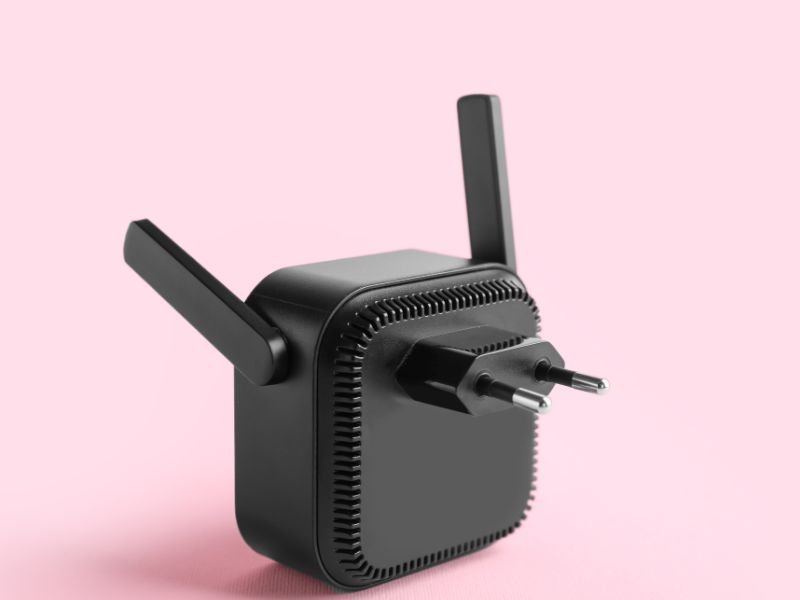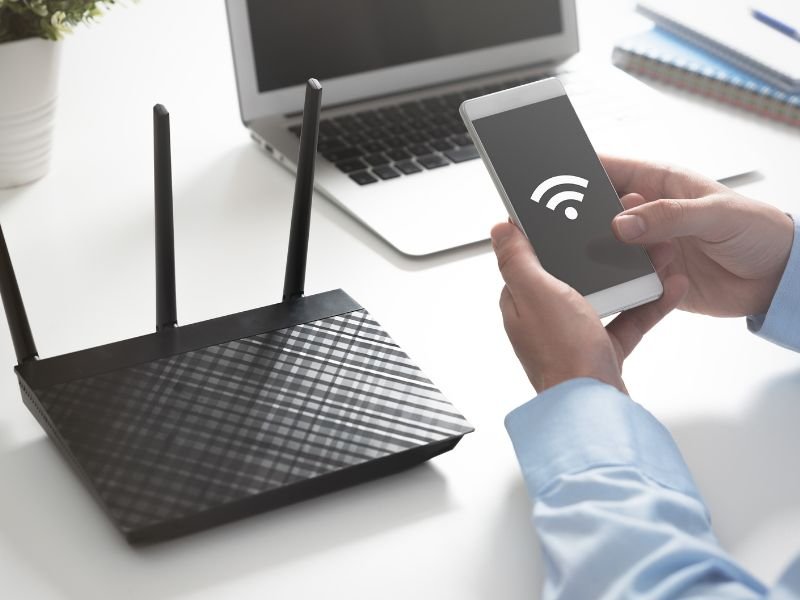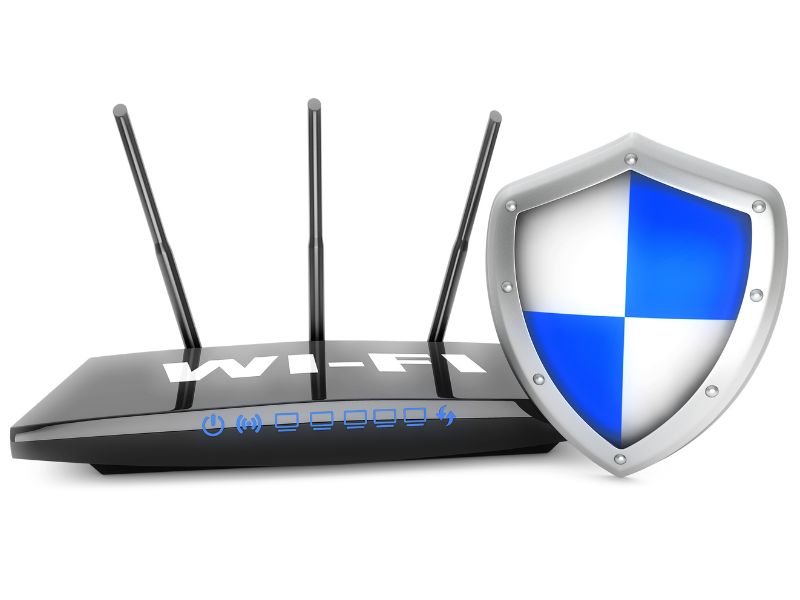In a world where staying connected is no longer a luxury, having a reliable Wi-Fi signal outdoors has become an essential necessity.
Whether you are working alfresco, binge-watching your favorite shows on the patio, or simply enjoying the tranquility of your backyard, a weak Wi-Fi signal can quickly become a frustrating hindrance.
Fear not, for we have the answers to your connectivity woes. In this article, we unveil a plethora of tips, tricks, and practical solutions to help you boost your outdoor Wi-Fi signal and pave the way for uninterrupted internet access in the great outdoors.
So, sit back, relax, and embark on your journey to a stronger, more robust outdoor Wi-Fi connection.
Table of Contents
- Identifying the Factors Affecting Your Outdoor Wi-Fi Signal
- Choosing the Right Equipment: Essential Tools for Enhancing Your Outdoor Wi-Fi Connectivity
- Optimal Placement Strategies: Positioning Your Router and Antennas for Maximum Signal Strength
- Exploring Power Boosters and Signal Repeaters for Extended Outdoor Coverage
- Minimizing Wi-Fi Interruptions from Nearby Devices and Environmental Factors
- Securing Your Outdoor Network: Maintaining a Safe and Protected Connection in Open Air Environments
- Expert Tips and Troubleshooting Tricks: Proven Hacks for Enhancing Outdoor Wi-Fi Signal Strength
- FAQs About How to Boost Your Outdoor Wi-Fi Signal
- Final Words
Identifying the Factors Affecting Your Outdoor Wi-Fi Signal
In order to effectively boost your outdoor Wi-Fi signal, it is important to understand the potential challenges and factors that can impact your connectivity.
Several key factors can affect the strength and stability of your outdoor Wi-Fi signal, including distance, obstacles, and interference.
Distance
Unlike indoor Wi-Fi signals, outdoor signals have to cover a larger area, often leading to weaker signal strength.
The farther you are from the router, the weaker the signal becomes. Understanding the range limitations of your Wi-Fi signal is crucial when aiming to boost its outdoor coverage.
Obstacles
Various physical obstacles can obstruct and weaken outdoor Wi-Fi signals, such as walls, trees, buildings, and even the terrain itself.
These obstructions can scatter and absorb Wi-Fi signals, resulting in reduced coverage and decreased signal strength.
Interference
Interference from nearby devices and other wireless networks can significantly impact your outdoor Wi-Fi signal strength.
Common sources of interference include microwaves, cordless phones, Bluetooth devices, and neighboring Wi-Fi networks operating on the same channel.
Additionally, environmental factors like weather conditions can also affect the quality and reliability of your outdoor Wi-Fi signal.
To effectively boost your outdoor Wi-Fi signal, it is crucial to address these challenges. By understanding how distance, obstacles, and interference impact your signal strength, you can implement appropriate strategies and technologies to enhance the reach and performance of your outdoor Wi-Fi network.
Choosing the Right Equipment: Essential Tools for Enhancing Your Outdoor Wi-Fi Connectivity
In order to boost your outdoor Wi-Fi signal effectively, it is crucial to select the right equipment that suits your specific needs.
Here, we will discuss the essential tools you should consider for enhancing your outdoor Wi-Fi connectivity.
1. Outdoor Wireless Access Point (AP)
Investing in a high-quality outdoor wireless AP is essential for extending the range of your Wi-Fi signal.
Look for an AP that is specifically designed for outdoor use, as it will be more durable and able to withstand environmental factors such as rain, heat, and dust.
Additionally, ensure that the AP supports the latest wireless standards (e.g., 802.11ac) for faster speeds and better performance.
2. High-Gain Antennas
Upgrading to high-gain antennas can significantly enhance the strength and coverage of your outdoor Wi-Fi signal.
These antennas are designed to focus the Wi-Fi signal in a specific direction, allowing for a longer range and better penetration through obstacles.
Consider purchasing omnidirectional antennas for broader coverage or directional antennas for more concentrated, long-range coverage.
3. Ethernet Surge Protector
Protecting your outdoor Wi-Fi equipment from electrical surges is crucial to prevent damage and ensure the longevity of your network.
Installing an Ethernet surge protector will safeguard your equipment from power surges caused by lightning strikes or other electrical disturbances.
4. Weatherproof Enclosures
To protect your equipment from the elements, consider using weatherproof enclosures for both your wireless AP and power injectors or other necessary devices.
These enclosures provide a seal against moisture and dust, keeping your equipment safe and functioning optimally.
When choosing the right equipment for your outdoor Wi-Fi connectivity, it is essential to consider the specific requirements of your location and the environment you will be operating in.
By investing in quality equipment that is specifically designed for outdoor use, you can ensure a reliable and high-performance outdoor Wi-Fi network.
Optimal Placement Strategies: Positioning Your Router and Antennas for Maximum Signal Strength
Choosing the right equipment is just the first step in boosting your outdoor Wi-Fi signal.
Equally important is where you position your router and antennas.
By strategically placing these components, you can maximize signal strength and ensure a strong and reliable Wi-Fi connection throughout your outdoor space.
Choose a Central Location
When determining where to place your router, aim for a central location that provides equal coverage to all areas of your outdoor space.
Avoid placing the router near walls or other obstructions that can hinder the signal.
Elevate Your Router
Positioning your router at a higher elevation can significantly improve signal strength.
Higher ground allows the signal to travel more freely and reach a wider area.
Consider mounting the router on a wall or placing it on a high shelf or table.
Minimize Obstacles
Keep your router away from large obstructions such as trees, buildings, or metal structures that can obstruct the signal.
These objects can act as barriers and weaken the Wi-Fi signal. Aim for a clear line of sight between the router and your outdoor space.
Adjust Antenna Positioning
Most routers come with adjustable antennas that can be angled up, down, or sideways.
Experiment with different angles to find the position that works best for your outdoor space.
In general, positioning the antennas vertically can provide better coverage.
Consider Using Additional Antennas
Depending on the size of your outdoor area, you might benefit from using additional antennas.
These can be omnidirectional antennas that broadcast the signal in all directions or directional antennas that focus the signal in a specific area.
Assess your outdoor space and determine if additional antennas would improve coverage.
By taking these optimal placement strategies into consideration, you can enhance your outdoor Wi-Fi signal and enjoy seamless connectivity throughout your outdoor space.
Remember to experiment with different positions and configurations to find the setup that works best for your specific environment.
Exploring Power Boosters and Signal Repeaters for Extended Outdoor Coverage
In this section, we will delve into the options available for enhancing the range of your outdoor Wi-Fi signal.
When it comes to outdoor connectivity, factors like distance and obstacles can significantly affect the strength and reach of your signal.
To overcome these challenges, power boosters and signal repeaters come to the rescue.
These tools help extend the coverage area of your outdoor Wi-Fi network, allowing you to enjoy a strong and reliable signal throughout your property.
Power boosters
Power boosters, also known as amplifiers or range extenders, increase the transmitting power of your Wi-Fi router.
They work by amplifying the signal and broadcasting it at a higher intensity, effectively expanding the coverage area.
Power boosters are particularly useful when you need to reach areas that are located far away from your router, such as a garage or a backyard.
It is important to note that power boosters should be compatible with your router and should be strategically placed to maximize their effectiveness.
Signal repeaters
Signal repeaters, also called range expanders or wireless extenders, work by receiving your existing Wi-Fi signal and rebroadcasting it.
They capture the signal coming from your router, amplify it, and transmit it further, effectively extending the range of your network.
Signal repeaters are an excellent solution for eliminating dead spots and ensuring a seamless connection throughout your outdoor space.
When using signal repeaters, it is crucial to position them in an area where they can still receive a strong signal from your router, as they rely on that to provide an extended coverage area.
To make the most of these tools, it is essential to consider the layout of your outdoor space and the areas that require extended coverage.
Experimenting with the placement of power boosters and signal repeaters can help you identify the optimal locations for achieving the desired signal range.
Remember that obstacles like thick walls, trees, and other objects can still impact the effectiveness of these tools, so careful positioning is key.
By exploring the options of power boosters and signal repeaters, you can effectively enhance the range of your outdoor Wi-Fi signal, ensuring a consistent and reliable connection even in areas that were previously out of reach.
These tools provide an excellent solution for extending coverage and overcoming the limitations posed by distance and obstacles. With a well-planned setup, you can enjoy a seamless internet experience throughout your outdoor space.
Minimizing Wi-Fi Interruptions from Nearby Devices and Environmental Factors
One of the biggest challenges of maintaining a strong outdoor Wi-Fi signal is dealing with interference from nearby devices and environmental factors.
These factors can significantly diminish the quality of your signal, resulting in slower speeds and a frustrating user experience.
However, with a few key strategies, you can minimize these interruptions and enjoy a reliable outdoor Wi-Fi connection.
1. Analyze the Nearby Devices
Start by identifying the devices that could be causing interference. This could include other Wi-Fi networks, microwave ovens, cordless phones, or even Bluetooth devices.
Consider using a Wi-Fi analyzer tool to scan for neighboring networks and their channel frequencies.
By selecting a less crowded channel or adjusting your Wi-Fi frequency, you can reduce interference and improve signal stability.
2. Optimize Router Placement
The placement of your router plays a crucial role in minimizing interference. Keep your router away from thick walls, large metal objects, and appliances that can emit electromagnetic waves.
It’s also essential to position your router at a central location within your outdoor area to ensure optimal signal coverage.
If necessary, consider using Wi-Fi signal boosters or range extenders to amplify the signal strength.
3. Utilize Outdoor-Friendly Equipment
Investing in outdoor-friendly Wi-Fi equipment specifically designed for rugged environments can greatly improve signal performance.
These devices are built to withstand harsh weather conditions and provide better signal penetration through obstacles.
Make sure to choose equipment with built-in features like weatherproof housing and high-gain antennas for enhanced outdoor range.
To further enhance your outdoor Wi-Fi signal, check out the next section on securing your outdoor network.
By taking these steps to minimize interference issues, you can optimize your signal strength and enjoy uninterrupted outdoor Wi-Fi connectivity.
Securing Your Outdoor Network: Maintaining a Safe and Protected Connection in Open Air Environments
In this section, we will discuss the importance of securing your outdoor Wi-Fi network to ensure a safe and protected connection in open-air environments.
With the growing popularity of outdoor Wi-Fi setups, it is crucial to take appropriate steps to safeguard your network from unauthorized access and potential cyber threats.
- Enable Network Encryption: The first step towards securing your outdoor network is to enable network encryption. Utilize the WPA2 security protocol, which provides robust encryption and authentication methods.
This ensures that only authorized devices can connect to your network, keeping potential intruders at bay. Avoid using the older WEP encryption method, as it is susceptible to hacking. - Change Default Login Credentials: To strengthen your network security, it is essential to change the default login credentials of your router.
Hackers often have knowledge of common default usernames and passwords, making it easier for them to gain unauthorized access.
Choose a unique username and a strong, complex password that includes a combination of letters, numbers, and special characters. - Disable Remote Administration: Disabling remote administration on your router is another vital step in securing your outdoor network.
This feature allows you to access your router’s settings from anywhere, but it also opens up a potential vulnerability.
By disabling remote administration, you limit access to the router’s settings to only devices on your local network, reducing the risk of unauthorized access. - Utilize a Firewall: Implementing a firewall is an effective way to protect your outdoor network from external threats. A firewall acts as a barrier between your network and the internet, monitoring incoming and outgoing traffic for any suspicious activity.
Configure your router’s built-in firewall or consider additional firewall options for added security. - Regularly Update Firmware: Firmware updates provide critical security patches that address vulnerabilities and enhance the overall performance of your router.
To ensure optimal security, regularly check for firmware updates on your router manufacturer’s website and install them as soon as they become available.
By following these precautionary measures, you can maintain a secure and protected connection for your outdoor Wi-Fi network, reducing the risk of unauthorized access and potential cyber threats.
Remember, investing time and effort into securing your outdoor network is crucial for a worry-free and seamless wireless experience in open-air environments.
Expert Tips and Troubleshooting Tricks: Proven Hacks for Enhancing Outdoor Wi-Fi Signal Strength
In this section, we will provide you with some expert tips and troubleshooting tricks to boost your outdoor Wi-Fi signal strength. These proven hacks can help you overcome common challenges and optimize your wireless connectivity in open-air environments.
Adjust the Orientation of Your Antennas
One simple yet effective tip is to ensure that your router antennas are positioned correctly. Pointing them in different directions can help improve signal strength.
Experiment with various angles to determine the optimal orientation for your particular setup.
Use High-Gain Antennas
Consider upgrading to high-gain antennas that provide better coverage and increased range.
These antennas are designed to focus and amplify the Wi-Fi signal in specific directions, allowing you to reach farther distances without compromising signal strength.
Reduce Interference from Obstacles
Sometimes, physical obstacles like trees, buildings, or walls can obstruct your Wi-Fi signal. To overcome this, try repositioning your router or antennas to avoid direct obstructions.
Mounting your equipment at higher elevations can also help minimize interference.
Find the Optimal Channel
Nearby Wi-Fi networks can cause interference and impact your signal strength. Use a Wi-Fi analyzer tool to identify which channels are less congested in your area.
Adjust your router settings to operate on a less congested channel for optimal performance.
Weatherproof Your Equipment
Outdoor Wi-Fi equipment can be exposed to harsh weather conditions.
Protect your routers and antennas from elements such as rain and direct sunlight by using weatherproof enclosures.
This ensures the longevity and stability of your outdoor network.
Regularly Update Firmware
Firmware updates often include enhancements and bug fixes that can improve the overall performance of your router.
Check for updates regularly and keep your equipment up to date to benefit from the latest optimizations.
Perform a Site Survey
Conducting a comprehensive site survey can help identify dead zones or areas with weak signal strength.
Use tools like heatmap software to map out the coverage of your Wi-Fi network and identify potential areas for improvement.
Remember, optimizing your outdoor Wi-Fi signal strength may require some trial and error. It is essential to assess your specific environment and make adjustments accordingly.
By implementing these expert tips and troubleshooting tricks, you can significantly enhance the performance of your outdoor Wi-Fi network.
FAQs About How to Boost Your Outdoor Wi-Fi Signal
How can I extend my outdoor Wi-Fi range?
To extend your outdoor Wi-Fi range, consider using a Wi-Fi range extender or a mesh network. These devices can amplify and distribute the Wi-Fi signal over a larger area, allowing you to enjoy a stronger connection outdoors.
Can a router booster increase my outdoor Wi-Fi signal?
Yes, a router booster or amplifier can help increase your outdoor Wi-Fi signal. By connecting it to your existing router, it can enhance signal strength and extend coverage to reach farther distances.
Are there any specific antennas that can improve outdoor Wi-Fi signals?
Yes, there are specific antennas designed to improve outdoor Wi-Fi signals. Directional antennas can focus the signal in a specific direction, while omnidirectional antennas can provide coverage in all directions. Choosing the right antenna for your needs can significantly enhance your outdoor Wi-Fi signal strength.
Does outdoor Wi-Fi signal get affected by obstacles?
Yes, outdoor Wi-Fi signals can be affected by obstacles such as walls, trees, and buildings. These physical barriers can weaken and disrupt the signal. To boost your outdoor Wi-Fi signal, ensure to position your router or access point in an unobstructed area and away from potential obstacles.
Is it possible to use a Wi-Fi repeater outdoors?
Yes, Wi-Fi repeaters can be used outdoors as long as they are weatherproof. These devices receive the Wi-Fi signal from your router and rebroadcast it, extending the coverage area. However, it is important to ensure that the Wi-Fi repeater you choose is suitable for outdoor use.
Final Words
Boosting your outdoor Wi-Fi signal is essential for enjoying a seamless internet connection in your outdoor spaces.
By employing methods such as using a range extender, and antennas, and avoiding obstacles, you can significantly enhance your signal strength and expand your Wi-Fi coverage.
By following these tips, you can enjoy reliable internet connectivity even in your backyard, patio, or garden.






